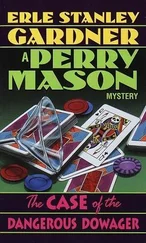Daniel Gardner - The Science of Fear
Здесь есть возможность читать онлайн «Daniel Gardner - The Science of Fear» весь текст электронной книги совершенно бесплатно (целиком полную версию без сокращений). В некоторых случаях можно слушать аудио, скачать через торрент в формате fb2 и присутствует краткое содержание. ISBN: , Издательство: Penguin Group (USA) Incorporated, Жанр: Психология, Политика, Прочая научная литература, на английском языке. Описание произведения, (предисловие) а так же отзывы посетителей доступны на портале библиотеки ЛибКат.
- Название:The Science of Fear
- Автор:
- Издательство:Penguin Group (USA) Incorporated
- Жанр:
- Год:неизвестен
- ISBN:9780525950622
- Рейтинг книги:3 / 5. Голосов: 1
-
Избранное:Добавить в избранное
- Отзывы:
-
Ваша оценка:
- 60
- 1
- 2
- 3
- 4
- 5
The Science of Fear: краткое содержание, описание и аннотация
Предлагаем к чтению аннотацию, описание, краткое содержание или предисловие (зависит от того, что написал сам автор книги «The Science of Fear»). Если вы не нашли необходимую информацию о книге — напишите в комментариях, мы постараемся отыскать её.
The Science of Fear — читать онлайн бесплатно полную книгу (весь текст) целиком
Ниже представлен текст книги, разбитый по страницам. Система сохранения места последней прочитанной страницы, позволяет с удобством читать онлайн бесплатно книгу «The Science of Fear», без необходимости каждый раз заново искать на чём Вы остановились. Поставьте закладку, и сможете в любой момент перейти на страницу, на которой закончили чтение.
Интервал:
Закладка:
282: “. . . in order to make the generals race there. . . .” In a September 2007 video, bin Laden also boasted that “19 young men” were able to radically change American policy and “the subject of mujahedeen has become an inseparable part of the speech of your leader.”
283: “. . . recognize that terrorism is a psychological tactic.” As novelist William Gibson put it in an interview, “terrorism is a con game. It doesn’t always work. It depends on the society you are playing it on. It certainly has worked in the United States.”
286: “. . . is much lower than it is commonly portrayed, it, too, is real.” Oddly, one can plausibly argue that too little money has been spent mitigating the risk of nuclear terrorism—which may be an improbable form of terrorism but is nonetheless the greatest terrorist threat simply by virtue of the number of lives it endangers. At least half the Russian facilities with nuclear materials still have not received security upgrades because American funding for the program that does this work is so limited. Similarly, huge quantities of plutonium that the Russians agreed to destroy were simply put in storage because there was no money to do the job. The UN’s International Atomic Energy Agency—the world’s nuclear watchdog—has a budget of only $130 million and its director often has to go begging for cash. “The agency constantly risks lagging behind in the technology race because we are forced to make do on a shoestring budget,” Mohamed El Baradei told the Associated Press in 2007. Ted Turner and Warren Buffett became major funders of nuclear security initiatives after the billionaires discovered how the work was being shortchanged by the world’s governments.
CHAPTER I2
292: “. . . started inching up. In 1900, it stood at forty-eight years.” See Robert Fogel, The Escape from Hunger and Premature Death: 1700-2100.
292: “. . . died before they were five years old. . . .” See Samuel H. Preston and Michael Haines, Fatal Years: Child Mortality in Late Nineteenth-Century America, Princeton University Press, Princeton, NJ, 1991. The authors show that the toll was distributed throughout American society. Losing children was a common experience even for the very wealthy.
293: “... life expectancy will rise in every region of the world.” See Colin Mather and Dejan Loncar Projections of Global Mortality and Burdens of Disease from 2002 to 2030, Public Library of Science Medicine 3, no. 11 (November 2006).
295: “. . . to err is human, but, happily for us, we are not human.” In a series of experiments, psychologists Emily Pronin, Daniel Lin and Lee Ross gave Stanford University students booklets describing eight biases identified by psychologists. They then asked how susceptible the “average American”is to each of these biases. The average student at Stanford? You? In every case, the students said the average student is quite susceptible, but they are much less so. The researchers got the same results when they ran a version of the test in the San Francisco International airport. In more elaborate experiments, Pronin, Lin, and Ross sat people down in pairs and had them take what they said was a “social intelligence” test. The test was bogus. One of the two test-takers—chosen randomly—was given a high score. The other was given a low score. Then they were asked whether they thought the test was an accurate measure of social intelligence. In most cases, the person who got the high score said it was, while the poor guy who got the low score insisted it was not. That’s a standard bias at work—psychologists call it the “self-serving bias.” But then things got interesting. The researchers explained what the “self-serving bias” is and then they asked whether that bias might have had any influence on their judgment. Why, yes, most said. It did influence the other guy’s judgment. But me? Not really.
301: “. . . much more confident of those outcomes than the Thomas Friedman of 1985 really was.” In 2005, four out of five Canadians agreed that “the world is not as safe a place today as it was when I was growing up.” Particularly extraordinary is that 85 percent of Canadians born during or prior to the Second World War agreed with this statement: Thus, almost everyone who grew up in an era characterized by the rise of totalitarian nightmares, economic collapse, and world war agreed that the world today is more dangerous than that . (See Reginald Bibby, The Boomer Factor, Bastian Books, Toronto, Canada, 2006.)
301: “. . . they tend to focus on the negative side of things, for some reason. . . .” Just as it is possible to look into the future and imagine horrible things happening, it is possible to dream up wondrous changes. Vaccines for malaria and AIDS would save the lives of hundreds of millions of people. Genetically engineered crops could bring an abundance of cheap food to the world’s masses. Hyperefficient forms of alternative energy may make fossil fuels obsolete and radically mitigate climate change. In combination, they may usher in an unparalleled Golden Age—which is as likely as some of the more outlandish scenarios in Catastrophist writing.
304: “. . . satisfied and they changed ‘century’ to ‘hour.’” The full, terrifying title is Our Final Hour: A Scientist’s Warning: How Terror, Error and Environmental Disaster Threaten Humankind’s Future in This Century—On Earth and Beyond . Much of the book is purely speculative. Rees notes, for example, that if nanotechnology got out of control and became self-replicating it could turn the world into “gray goo.” This is far beyond any technology humanity has invented or will invent for the foreseeable future, Rees acknowledges, and the only thing making it even a theoretical possibility is the fact that it doesn’t violate any laws of physics. As British science writer Oliver Morton wrote in reviewing Rees’s book, “if we’re to take the risk seriously, we need something more to gnaw on than the fact that it breaks no laws of physics. Neither do invisible rabbits.”
Bibliography
ESSENTIAL READING
Gilovich, Thomas, Dale Griffin, and Daniel Kahneman (eds.), Heuristics and Biases: The Psychology of Intuitive Judgment, Cambridge University Press, New York, 2002.
Kahneman, Daniel, Paul Slovic, and Amos Tversky (eds.), Judgment Under Uncertainty: Heuristics and Biases, Cambridge University Press, New York, 1982.
Lichtenstein, Sarah, and Paul Slovic (eds.), The Construction of Preference , Cambridge University Press, New York, 2006.
Slovic, Paul, The Perception of Risk, Earthscan, London, UK, 2000.
Sunstein, Cass R., Laws of Fear: Beyond the Precautionary Principle, Cambridge University Press, New York, 2005.
Sunstein, Cass R., Risk and Reason: Safety, Law, and the Environment, Cambridge University Press, New York, 2002.
Allen, Arthur, Vaccine: The Controversial Story of Medicine’s Greatest Lifesaver, Norton, New York, 2007.
Bazerman, Max, and Michael D. Watkins, Predictable Surprises: The Disasters You Should Have Seen Coming and How to Prevent Them, Harvard Business School Press, Boston, MA, 2004.
Best, Joel, Damned Lies and Statistics: Untangling Numbers from the Media, Politicians, and Activists, University of California Press, Berkeley, CA, 2001.
Bobrowsky, Peter, and Hans Rickman, Comet/Asteroid Impacts and Human Society, Springer, New York, 2007.
Bourke, Joanna, Fear: A Cultural History, Virago Press, London, 2005.
Buss, David M. (ed.), The Handbook of Evolutionary Psychology, Wiley, Hoboken, NJ, 2005.
Carson, Rachel, Silent Spring, Mariner Books, Boston, MA, 2002.
Читать дальшеИнтервал:
Закладка:
Похожие книги на «The Science of Fear»
Представляем Вашему вниманию похожие книги на «The Science of Fear» списком для выбора. Мы отобрали схожую по названию и смыслу литературу в надежде предоставить читателям больше вариантов отыскать новые, интересные, ещё непрочитанные произведения.
Обсуждение, отзывы о книге «The Science of Fear» и просто собственные мнения читателей. Оставьте ваши комментарии, напишите, что Вы думаете о произведении, его смысле или главных героях. Укажите что конкретно понравилось, а что нет, и почему Вы так считаете.












